In the last decade, more and more people eat organic food which can be easily found in most supermarkets. Natural cosmetic and “green” cleaners have also become incredibly popular. But did you ever think about chemicals in your clothes? Did you hear that some clothes can affect your health long-term?
For example, you decided that it was time to take care of your health and change your lifestyle. What is usually done in such cases? We attend dieticians, adjust our diet, undergo tests and examinations, arrange various cleansing procedures, become fitness club members, start to eat vegetarian food, and take vitamins. But rarely does anyone think that it’s worth paying attention to the fabrics that are in continual contact with the skin.
Probably, like most people I never gave it a thought until I got a gift – a comforter, which label said that it was made from 100% organic cotton. And I started to ask myself – is it important? Why is it good?
We live in “a material” world. Fabrics are everywhere. Look around – your clothes, linens, furniture, curtains, and car interiors are made with some kind of fabric. But our “material” world is far from ideal. What are the most common fabrics of our life? Polyester, acrylic, acetate, nylon, and rayon.

If you look at labels, you will be surprised just how many products in your life are made from synthetic fibers. Underwear, shirts, dresses, socks, pants, skirts, pajamas, bed sheets, pillowcases, mattresses, upholstery, curtains, carpets, not to mention diapers and sanitary pads.
Let me ask you – do you own an all-cotton bra? Silk pantyhose? Wool coat? I don’t. Our bras are fully synthetic now, pantyhose made from 100 % polyester, and coats are anything but wool. It seems to me that the most popular fabric in our monster textile industry is polyester. And while scientists can’t say for sure that this man-made fiber is bad for our health, some concerns are rising. So, why polyester can affect our well-being?
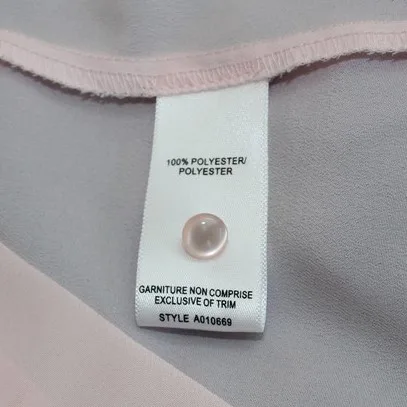
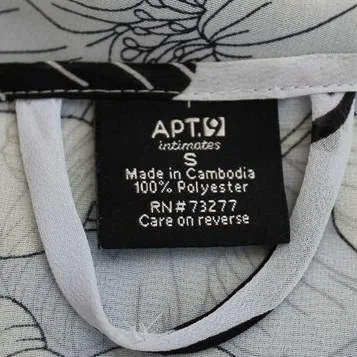
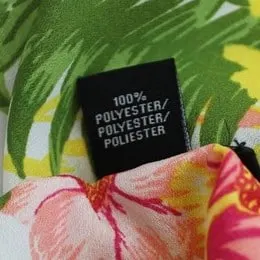
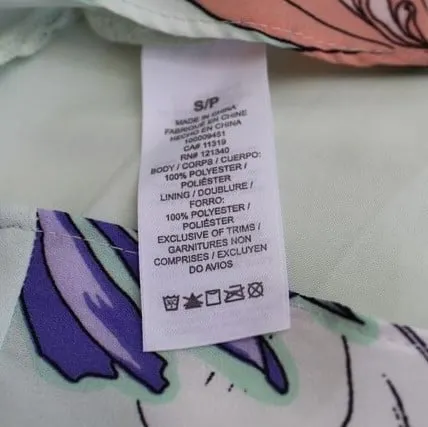
First of all, polyester like plastic and polyethylene is made from petroleum-derived substances. It is a pure chemical product of the oil industry. When I wear a polyester dress on a hot summer day I feel like I am inside of a plastic bottle. Very uncomfortable feeling.
Polyester is a polymer. A polymer is a chemical compound that is made of small molecules that are arranged in a simple repeating structure to form a larger molecule. The little molecules are called monomers. Polyester fibers are formed from a chemical reaction between an acid and alcohol. The most common type of chemical reaction used to make polyester takes place at high temperatures in a vacuum. This reaction is known as polymerization. The polymer material created during polymerization is extruded while hot into long fibers that are stretched until they are about five times their original length. Polyester is the terminal product in a chain of very reactive and toxic precursors. Most are carcinogens; all are poisonous.
You see, it sounds so “chemically”. And these chemicals touch the skin day and night and certainly, they may create problems like infertility, respiratory diseases, contact dermatitis, and cancer. Toxic absorption increases even more with high temperatures and humidity.
As of current times, data on the human health effects of synthetic fibers are sparse. Not so many medical studies were done about polyester and our health. But I found the results of some of them. In a study of 24 to 27-year-old men, natural linen long-sleeved shirts were worn for five hours — and then polyester ones were worn for another five hours. Their arms were monitored during both, with electrodes measuring skin temperature and velocity of the men’s muscle tissue. No changes were measured when they wore the linen. But when they donned polyester they endured a range of muscle disruptions. The study showed that polyester fibers cause muscle fatigue.
Polyester is known to cause contact dermatitis like rashes, red marks, and itching; my own mother-in-law was highly allergic to polyester. Can you imagine being allergic to your clothes? Well, it is happening in reality. Though many natural and eco-friendly materials can cause an allergic reaction in people with sensitive skin, synthetic fibers and especially polyester are the biggest offenders.

Polyester like other synthetic fibers (nylon, acrylic) generates and then holds on to static electricity more than other materials. Of course, all fabrics have some tendency to build up a static charge especially if the air is dry, but synthetics are particularly “good” at it. And it is not really healthy to wear clothes that crackle and spark static electricity. Electrostatic charges accumulate more in synthetic clothing.
For half a century now nearly all fabrics including natural fibers also contain toxins like formaldehyde, brominated flame retardants, and perfluorinated compounds. Why? To make clothes, upholstery and linens wrinkle resistant, water and fire-proof, mildew resistant, anti-static, and anti-shrink. All these chemicals are extremely stable and can be stored in human bodies causing several types of tumors and neonatal death and may have toxic effects on the immune, liver, and endocrine systems.
Formaldehyde is linked to a 30% increase in lung cancer. And I heard that there have even been lawsuits alleging high levels of formaldehyde in Victoria’s Secret bras.
Fabrics are also treated with toxic to the human body petrochemical dyes, bleach, detergents, and softeners.
So, what can we do to reduce this toxic load on our bodies? The answers are not so simple. Let me tell you one old joke. “If you sleep on your back it is bad for your lungs. If you sleep on your stomach it is bad for your face. If you sleep on your right it is bad for your liver. If you sleep on your left it is bad for your heart. But we wish you a good night!” The joke is right – practically everything is not healthy or safe at some point. Still, some choices are better than others.

First of all, try to move to natural fibers with your clothing – cotton, silk, wool, and linen. They have always been around and we know from a long history that they are relatively safe in their natural state ( i.e. not treated with other chemicals ). And if you care about the health of your family, then it’s worth learning more about the special properties of natural fabrics.
Of course, natural doesn’t equal better in all circumstances. Some people are allergic to natural materials, especially wool.
Among natural fibers cotton is the most popular and affordable. Cotton is very comfortable to wear, it is usually hypoallergenic, strong, and has very good breathable characteristics. It conducts heat well – in summer it prevents your skin from heat, and in winter it preserves the warmth of your body. Cotton has a high water-absorbing capacity. It is easy to care for because it is resistant to wear, washing, and the effect of light. It also resists pilling and moth. And people use cotton fabric for 7000 years!
✅ Related tutorial: Organic cotton fabric benefits
Yet cotton fabric wrinkles easily. That’s why manufacturers often combine cotton with polyester and put formaldehyde in it. Chemical dyes also can ruin cotton. Moreover, cotton fiber is made from plants that can be full of pesticides if they are not organically grown. The cotton industry relies heavily on fertilizers and insecticides, and of course, these chemicals can go to fabrics made from this cotton.
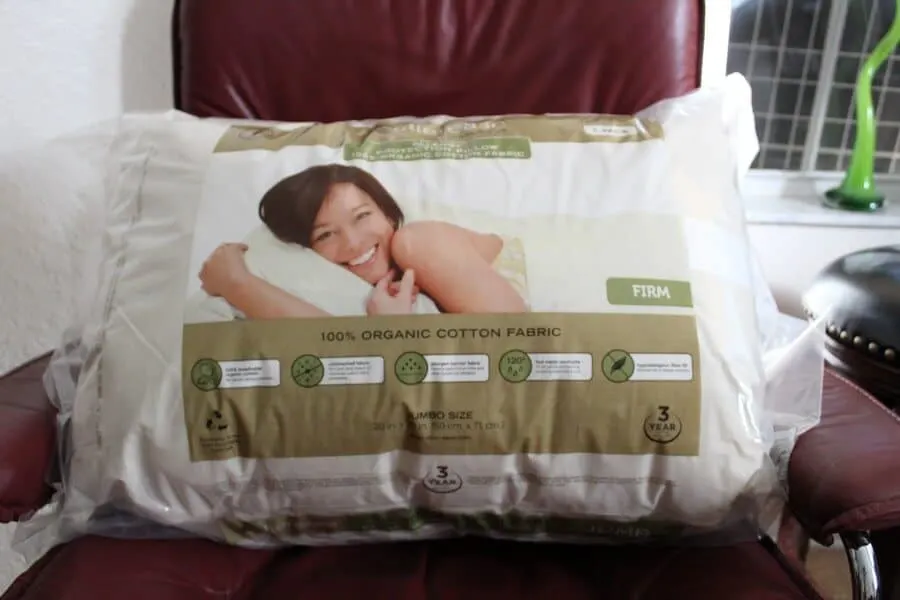
Silk, linen, and wool are other natural fabrics we want to consider as an alternative to synthetic fibers. They are not very easy to find in our stores either and they are really expensive.
✅ Related tutorial: How to sew silk
I often see gorgeous silk dresses and blouses in big brand names stores, but their lining is always 100% polyester. So what is the point to wear this? Synthetic is right on your skin and silk is just for beauty?
By the way, artificial silk looks sometimes even better than natural – it is wrinkle-resistant and really shiny. So, to me, it would be more logical to make a lining that touches the skin from pure silk and the dress itself from polyester.
But as I said I see the opposite all the time. It was only once when I saw a lining and the dress both made from 100% silk – it was a Gucci store though. But as you can see in the images below, most of the time we have the outer shell made of silk (why?) and the inner which touches your skin, lining polyester. That makes sense, right? NOT!
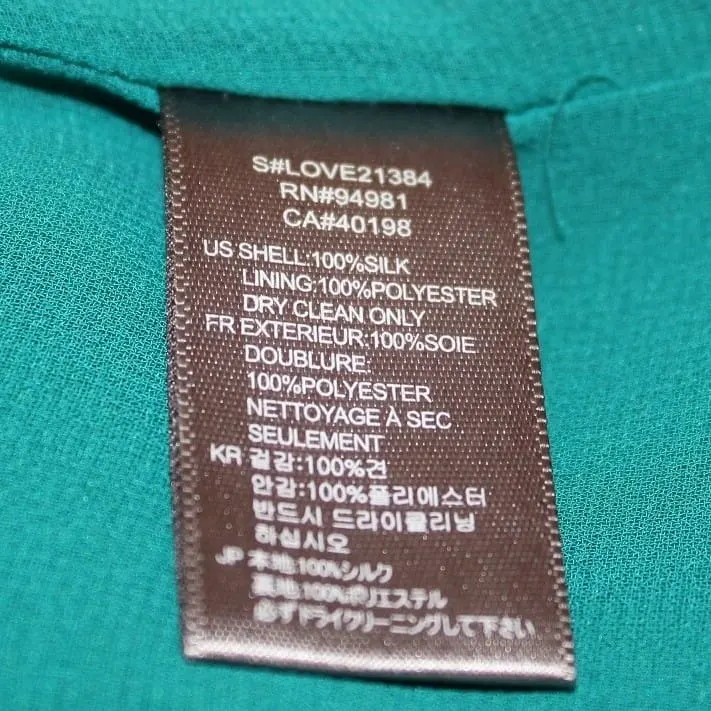
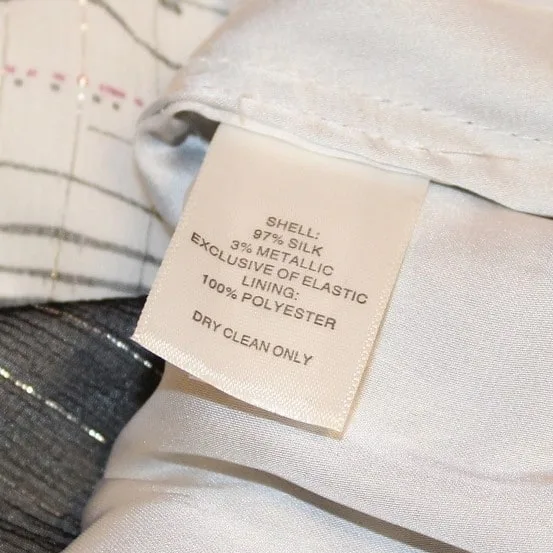
I noticed that selection of clothes made from 100% linen and wool is a little bit wider than made from organic cotton or natural silk.
As a rule, we recognize linen clothes on a person from afar. The characteristic wrinkling and “sacking” (I mean it often looks like you are wearing a sack, right?) unmistakably suggest – it’s linen. But, if you understand and accept these properties of linen fabric, then the rest are solid PLUSES.
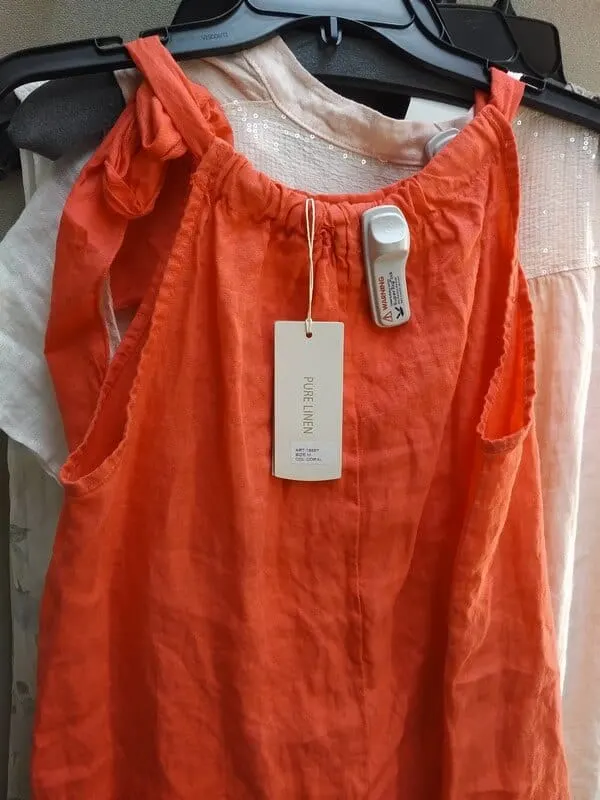
So, people wore clothes from linen more than five thousand years ago and still wear them to this day. Moreover, such clothes belong to the luxury and expensive style. And it’s not just because of the complex and long process of making fabric from the flax stem, but also because of the characteristics of clothing made from it.
The strength of flax thread is twice as high as cotton and 4 times of wool. Of all natural fibers, flax is considered to be the strongest. So I can say that linen clothes last forever. Flax, especially unbleached, has bactericidal properties. So clothing made of flax is good for your body.
Also, experts say that linen clothes reflect UV radiation. In hot weather, linen fabric creates a feeling of coolness. Linen is always cool to the touch. This is caused by the structure of the fibers and their thermal conductivity (in linen it is 5 times larger than that of wool!).
Studies showed that people dressed in linen clothes sweat half of those who are in cotton, and the temperature of the body under linen clothes is a little lower than under clothes from other fibers. This – and also its reflective properties – make flax the most pleasant fabric for hot summer weather.
Linen is hypoallergenic. Therefore, doctors advise people prone to allergies to wear linen clothing and use linen products in everyday life (towels, bed linens).
I believe that clothing made from linen is very beautiful. Perhaps the main distinguishing feature of linen clothes is simplicity. Simple, natural colors, simple pattern lines, loose cuts – that’s what attracts me. I know that not everyone will agree with me: not everyone likes its wrinkles or its sometimes uneven texture. Some simply do not like linen for being difficult to iron. Some people do not like the price of linen: after all, good linen clothes are much more expensive than cotton.
Now a few words about pure wool fabric. Garments made of natural wool are also not cheap. Consequently, wool is considered a luxury fiber. Since ancient times, natural wool has been used to produce clothing that protects people in the cold season, keeping them dry and warm, and allowing the skin to breathe. In our wardrobe, there must be woolen things that keep us comfortable in cold weather. Even a thin wool jacket adds a lot of warmth.
But wool is good not only because it gives warmth to the body. Since wool is a natural material, the benefits for the body are obvious. Wool is an extremely versatile material. Jackets, suits, coats, pants, sweaters, gloves, hats, and socks made from natural wool are durable and comfortable to wear.
Wool fabrics range from thick and coarse (for coats and other outerwear) to very lightweight and soft to the touch. Wool is naturally water-resistant. Light rain or snow will stay on the surface or run off the fabric. Wool fibers are highly absorbent and can soak up around 20% of their weight in water without feeling damp or clammy. Wool fabrics are very durable and flexible. Wool does not wrinkle much. It is resistant to wear and tear.

So, if you are committed to a healthier lifestyle, pay attention not only to your food but to your clothes also. If you can – buy chemical-free organic cotton products, especially for clothing closest to your body – underwear, sleepwear, t-shirts, socks.
But here comes another problem. We can find organic food and organic household cleaners in every supermarket, but where to find organic clothes and bed linens? Shopping for them is practically a nightmare.
I wanted to buy 100% organic cotton socks for my family. Not only I didn’t find socks from organic cotton, I got really exhausted from trying to find just 100% cotton socks. It seems they just don’t exist. The best I could find in stores were socks with 85% cotton and 15% polyester. And what is more disturbing, the kids’ socks I found were made only from poly without even any cotton. Yes, polyester socks are strong, they don’t break easily. But I don’t feel good in them. Feet are getting wet and irritable after a while and odor is pervasive sometimes.
I advise you to look at the labels on any new clothing or bed linens before you purchase. I am sure many people never read text on tags where it is written what fibers were used for the garment. It seems to me most people use labels just to see where is front and where is back of the garment. Often labels with information about the fabric the garment is made from can be found on the left side seams of the cloth.
I think as of a current time it is easier to find healthier clothing online. I don’t say that we have to move back to caves and drop all plastic usage. But I hope you will use the information in this article and create your new wardrobe full of quality garments.
As for me, I make my own clothes: dresses, blouses, skirts, even underwear, and coats. And for some time now I only sew with organic and natural fabric. If I make garments with lining I use ONLY 100% silk fabric as lining. I started to see organic cotton for sale in retail fabric stores, and now there are many online stores that sell organic cotton and prices are affordable and the choice is quite big.
I don’t say that I advise everybody to start sewing. You choose it for yourself. But if you want to know why sewing is really a good hobby go to my article
Sewing therapy for healthy living:
14 reasons that will make you want to sew
And if you want to learn how to sew, you can find the first steps you should take in these posts:
Sewing Basics # 1: 10+ essential sewing tools for beginners
Sewing Basics # 2: Learn how to sew by hand
Sewing Basics # 3: Learn how to use a sewing machine
Or, if you are already hooked on sewing check out these easy sewing projects made from 100% silk.
Easy to sew a dress that will make you look stylish and unique
How to sew a dress without a pattern
Easy sewing projects with buttons
Do you know somebody who would benefit from the information in this article? Share it with your friends on Facebook or Pinterest.
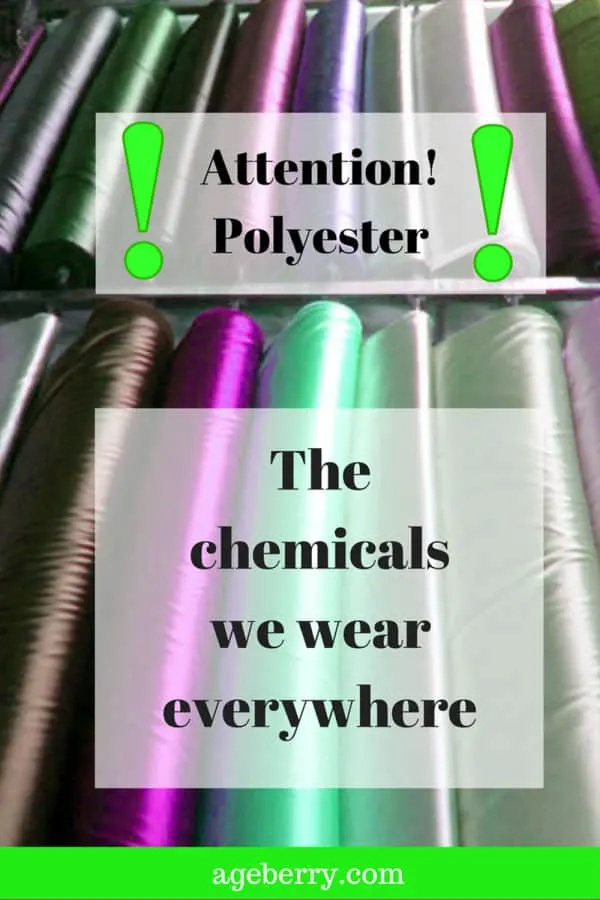
latest posts
- Knot a Problem: Easy Ways to Secure Short Thread Ends
- Ever Tried This on Your Serger? This Differential Feed Feature Will Amaze You
- Ditch My Sewing Machine? Not in This Lifetime!
- Adorable DIY Needle Book | Easy Tutorial for Beginners
- Master the Seam Ripper: Your Ultimate Guide to Precision Stitch Removal
- Think You Know Zippers? This Installation Guide Might Surprise You
- Why Does Your Seam Ripper Have a Red Ball? Discover Its Purpose!
- Topstitching Troubles? This Simple Trick Will Turn It Around Instantly!
- How to Sew Shirring: A Step-by-Step Guide to Elastic Thread Gathering
